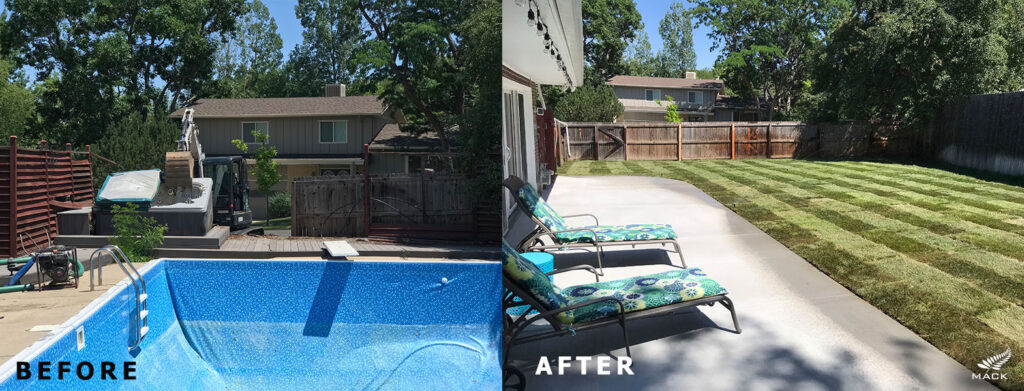Swimming pool demolition is the process of dismantling or removing a swimming pool from a property. There are various reasons why someone might decide to demolish a swimming pool, including outdated design, structural issues, lack of use, or the desire to repurpose the space for other purposes. Here are the general steps involved in swimming pool demolition:
Permits and Regulations: Before starting any demolition work, it’s important to check with local authorities to determine whether you need any permits or approvals to demolish a swimming pool. Regulations can vary widely depending on your location.
Draining the Pool: If the pool still contains water, it needs to be drained properly. It’s essential to follow local guidelines for draining water to avoid any environmental impact.
Disconnecting Utilities: Swimming pools usually have associated plumbing, electrical, and filtration systems. These systems need to be disconnected and properly shut down to ensure safety during the demolition process.
Demolition Method: There are two primary methods for swimming pool demolition: partial removal (also known as “abandonment”) and complete removal.
This Denver Pool Removal done the right way!

Partial Removal: In this method, the top layers of the pool’s structure are broken down, while the bottom layers are left in place. Holes are often punched in the bottom for drainage, and the area is then filled with soil and compacted. This is a more cost-effective option and is suitable if you don’t plan to build anything on top of the old pool area.
Complete Removal: This method involves breaking up and removing the entire pool structure, including the bottom layers. It’s a more thorough approach and provides a clean slate for future construction or landscaping. However, it’s usually more expensive and labor-intensive.
Demolition Process: Once the method is chosen, heavy equipment like excavators or backhoes is used to break up the pool’s structure. The concrete or other pool materials are then hauled away. The debris is disposed of in accordance with local regulations. At Mackland we also have compact excavators for those tight spaces.
Filling and Compacting: After the pool has been demolished, the resulting hole needs to be filled and compacted to ensure stability. Depending on the method chosen, this could involve backfilling with soil, gravel, or a combination of materials.
Final Grading and Restoration: The area is graded and leveled to match the surrounding landscape. Any necessary restoration work is done to make the area ready for its new purpose.
Something that we take a lot of pride in is recycling. Too much junk that could be recycled is being taken to land fills. Instead we choose to recycle items such as pool heaters, pool pumps, steel pipes, rebar, copper wire and sometime copper pipes.
It’s important to note that swimming pool demolition can be a complex process, involving heavy machinery and potential safety risks. It’s recommended to hire professionals who specialize in swimming pool removal to ensure the job is done safely, efficiently, and in compliance with local regulations. Additionally, the cost of swimming pool demolition can vary widely based on factors such as pool size, demolition method, location, and site access.
Mackland has been removing pools in the greater Denver area for years. We are not just another demolition company who also removes pools. We are experts in this field. Contact us for references.





